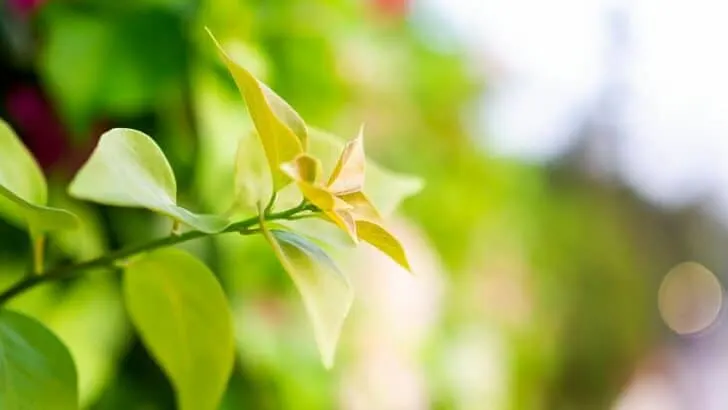Because the USDA reckons Bougainvillea’s hardiness as a zone 9 and upward plant, many gardeners make the mistake of thinking the plant needs little to no attention and does well and look pretty as long as it sits out in the garden and gets water occasionally.
This is incorrect and this often results in Bougainvillea leaves turning brown.
To grow Bougainvillea, you must first set up the plant in the right conditions and I am going to tell you how I have done this for my Bougainvillea plants.
But let’s start and have a look at why the leaves might be turning brown.
Table of Contents
Bougainvillea Leaves Turning Brown
Bougainvillea’s leaves typically turn brown because of underwatering. However, an overdose of fertilizer, bacterial and fungal infections, and “transplant shock” – which occurs when someone moves Bougainvillea from one place to another – also cause the plant’s leaves to turn brown.
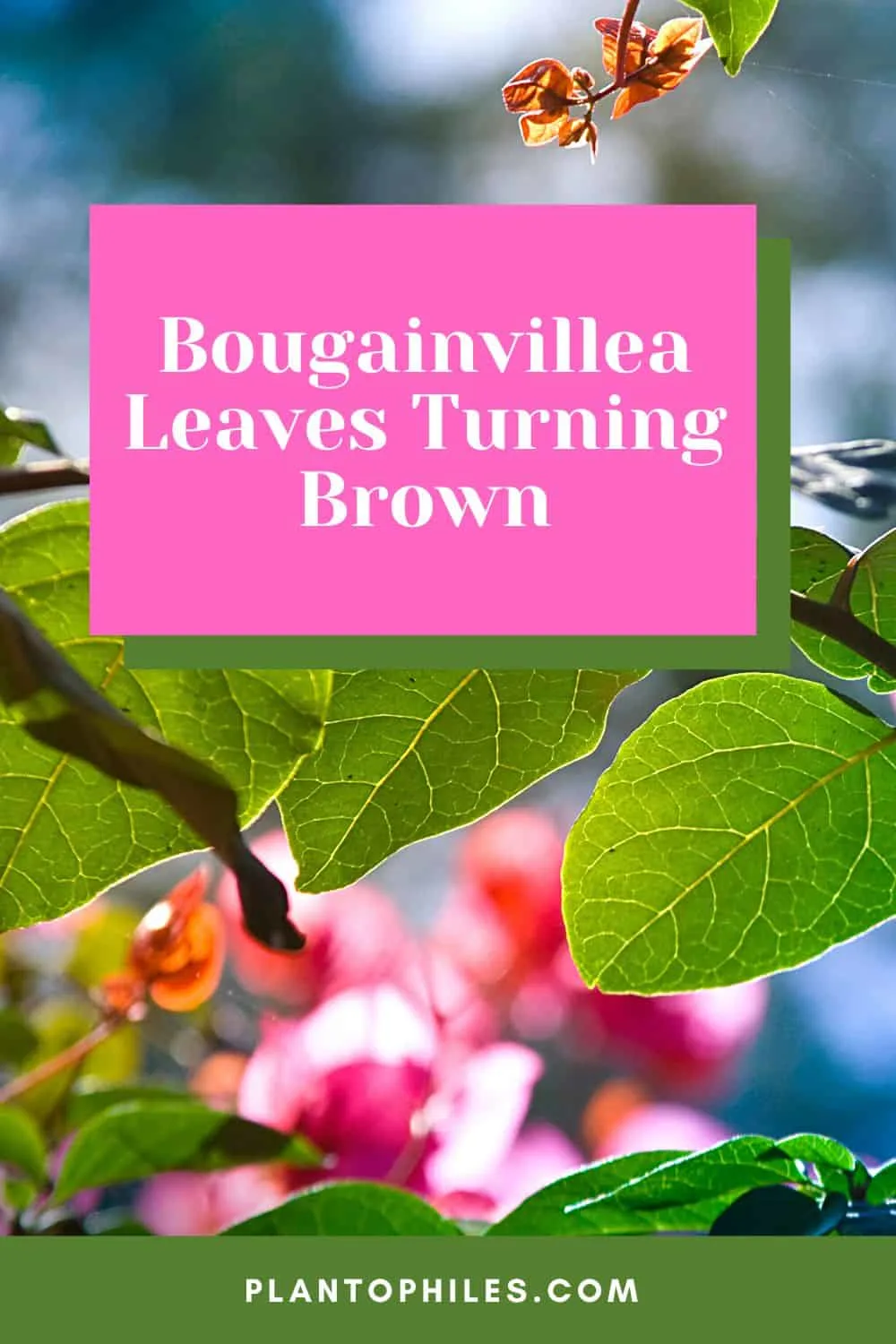
3 Main Reasons Bougainvillea Leaves Are Turning Brown
1. Underwatering Bougainvillea
Being tropical a plant (their historical homelands were wet areas in South America), Bougainvillea is incredibly sensitive to underwatering. When underwatered, the plant will give signs of its distress.
The first symptom of underwatering in Bougainvillea is it will drop leaves, and if it has any flowers or buds, those will drop too.
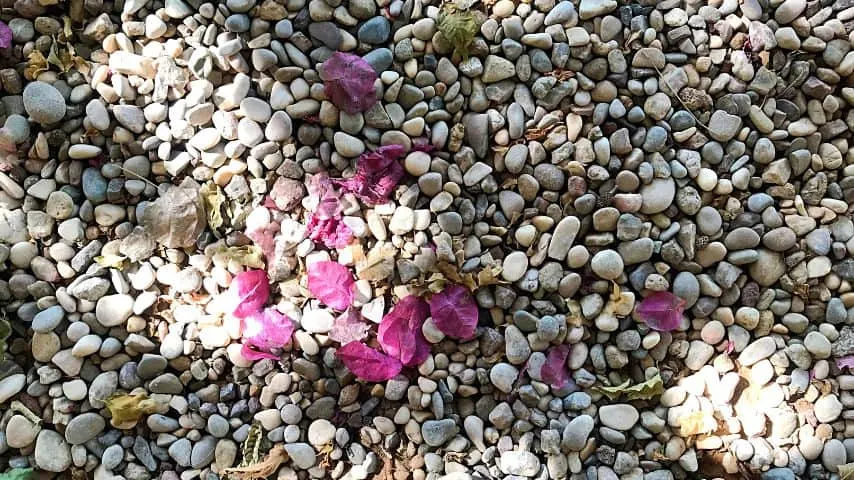
Bougainvillea will not produce flowers when stressed. But as the plant usually blooms for only three to five weeks in the growing season, its lack of flowers might not be apparent to you, so I wouldn’t ever wait to use a lack of flowers as symptomatic of underwatering.
One nasty little “gotcha” with this plant is that overwatering and underwatering both cause it to drop its leaves.
The solution is to look for the color change that will undoubtedly accompany any leaf dropping.
When Bougainvillea changes color to yellow, leaf drop is a sign of overwatering. When it changes to brown, you are facing underwatering.
Bougainvillea Watering Frequency Suggestion
To avoid underwatering Bougainvillea, give the plant a good soaking and let the soil it is standing in get really wet.
Next, wait for at least a week until the soil is dry again before you repeat the process.
This cycle of being parched and then almost (but not quite) waterlogged is exactly what happens to Bougainvillea in its native South America, so if your garden emulates this, you can be sure your plant will be as snug as a bug in a rug.
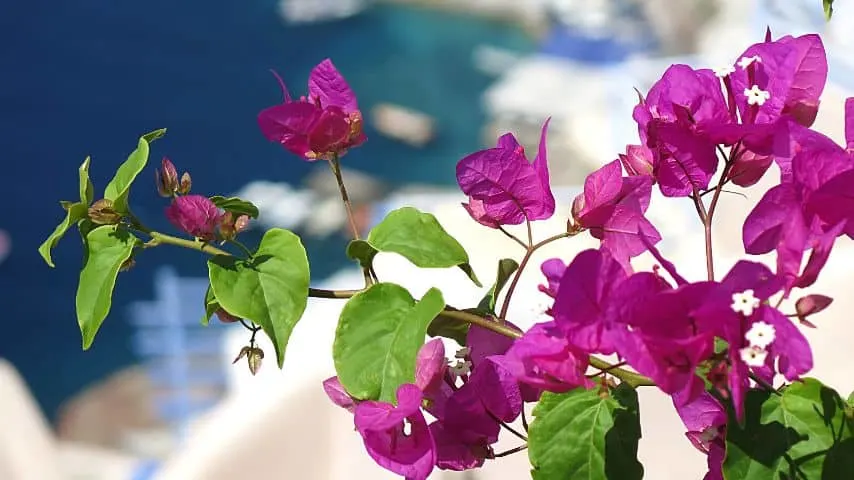
Here is a caveat to the routine specified above. If the temperature rises above 85°F for more than a day or two, you should check to see if you need to give your plant extra water because heat dries out the soil much quicker than usual.
To test whether you need to water the plant, push through the soil to the depth of a finger to see if the soil is moist. If it is, there’s no need for further water.
If it is dry, then apply plenty of water as normal.
Once you have set up a regular schedule for watering your Bougainvillea, you shouldn’t have to change it except for changes in the weather, such as it being too hot, too cold, or too wet due to rain.
Use the finger test described above to deal with these changing conditions and Bougainvillea to prevent underwatering the plant.
Soil Conditions and Bougainvillea’s Root System
An unexpected side effect of overwatering Bougainvillea is that the plant will suffer from thirst!
What happens is that overwatering damages the plant’s roots, and the plant can’t pull out enough nutrients or water from the ground. In the end, incredibly, the plant suffers starvation but dies of thirst.
Especially when newly transferred (transplant shock) or grown in a pot or constricted space with poor water drainage (root rot), Bougainvillea is sure to wilt and display brown leaves.
The wise thing to do in either case is the use the finger test technique I outlined above to ensure you are giving the plant the right amount of water.
Where the plant has been in saturated soil, it might already be too late for you to save it. If you are nevertheless going to try, first improve the soil’s drainage.
For example, if the plant is placed in a pot, punch drainage holes into the base of the container. If the plant is in a bed, create and maintain drainage channels to let the excess water escape.
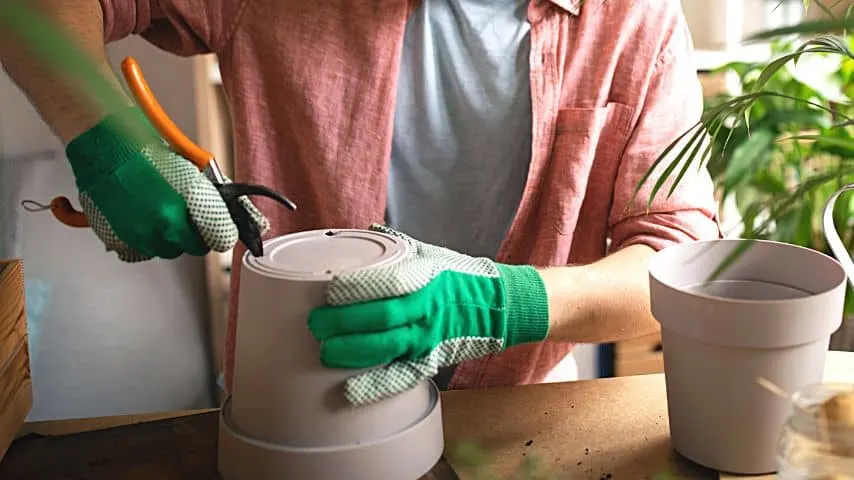
2. Overdosing Bougainvillea on Fertilizer
Brown Bougainvillea leaves can be the result of overenthusiastic fertilization.
This is very easy to do when gung-ho gardeners go overboard with NPK fertilizers, thinking to themselves, “If N amount of fertilizer is good for my plant, then 2 x N amount will be twice as good for it.”
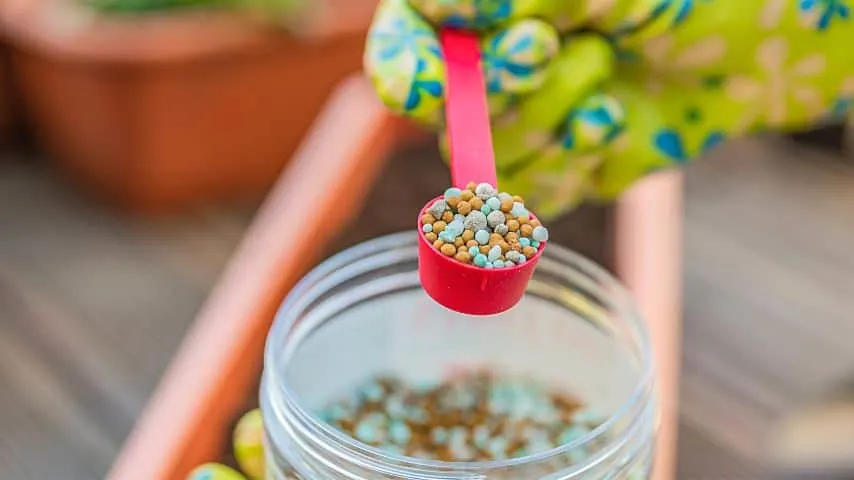
Of course, nothing could be further from the truth, and if only these gardeners took the time to carefully read the labels on these fertilizers, they would know that.
Apart from overdosing the plant on fertilizers, it is possible to use the wrong sort of (synthetic) fertilizer. When using NPK fertilizers, also use a slow-release, balanced product.
For Bougainvillea, use 5-5-5 or 10-10-10 fertilizers.
Note that quick-release fertilizers often “burn” and damage the plant’s roots, resulting in symptoms that look like root rot.
Wherever possible, use a good organic fertilizer on your Bougainvillea and all your plants, if you can.
3. Bacterial and Fungal infections
Infections by bacteria and fungi cause brown spots on your Bougainvillea. Bacterial spots tend to be spherical, whereas fungal spots tend to be triangular.
To be brutally frank, the best way to deal with either infection is to not get it in the first place, and prevention is definitely better than cure.
If you are troubled by a bacterial or fungal infection, consult your local nursery or university botany department for advice.
Frequently Asked Questions about Bougainvillea Leaves Turning Brown
Some say Bougainvillea turns brown because of overwatering, but here you are saying it turns brown because of underwatering. Who is right?
Bougainvillea definitely turns yellow when overwatered, not brown! Chemically, the yellow in Bougainvillea’s leaves when the plant has been overwatered is caused by an over-dilution of its chlorophyll, thus giving the plant a very light green which gives a yellowish impression.
Can my Bougainvillea leaves turn brown due to an overdose of organic fertilizer?
Although far less common than overdosing on synthetic fertilizer, too much of a good thing is too much. Hence, a long, sustained, never-ending exposure to organic fertilizer damages your Bougainvillea. Aside from that, a highly fertilized plant attracts all sorts of pests that bring viral and bacterial diseases with them.
Conclusion On Bougainvillea Leaves Turning Brown
Bougainvillea leaves are turning brown for the following reasons:
- Underwatering
- Fertilizer overdose
- Bacterial and fungal infections
- Transplant shock

Daniel has been a plant enthusiast for over 20 years. He owns hundreds of houseplants and prepares for the chili growing seasons yearly with great anticipation. His favorite plants are plant species in the Araceae family, such as Monstera, Philodendron, and Anthurium. He also loves gardening and is growing hot peppers, tomatoes, and many more vegetables.

